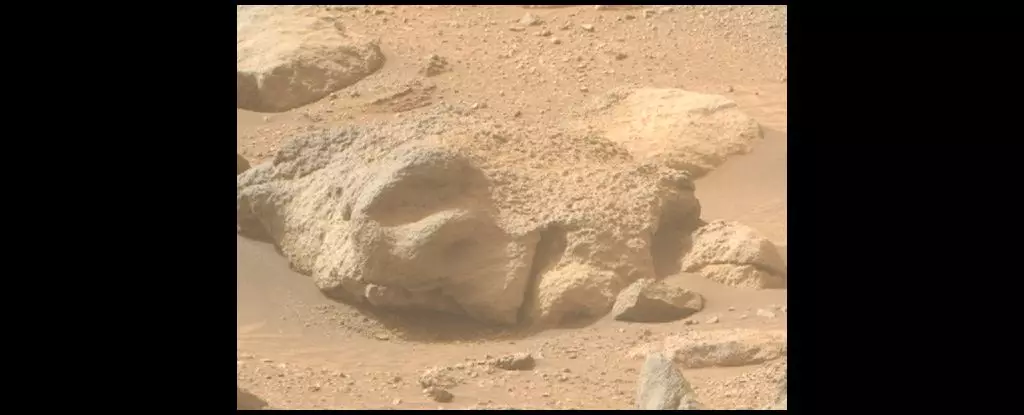The exploration of Mars has yielded a treasure trove of images that provoke our imagination and curiosity about the planet’s past. Amongst the intriguing discoveries are optical phenomena that trick the mind into perceiving familiar shapes in random formations of rocks. One striking instance of this visual puzzle, known as pareidolia, emerged from a photograph taken by the Perseverance rover. The image, resembling a decayed human head, serves as a striking reminder of how our brains interpret information, often leading us astray.
Pareidolia is not exclusive to the Martian landscape; it occurs frequently within our own environment, often leading us to ascribe meanings to ambiguous stimuli. The phenomena stem from the human brain’s evolutionary wiring, particularly within the fusiform gyrus, an area specialized for facial recognition. This instinctual ability to identify faces and significant shapes has obvious adaptive advantages, aiding in social interaction and survival. However, it also means our perceptions can be heavily influenced by context and expectation, encouraging misinterpretation of inanimate objects.
When we see a semblance of a face in a rock formation or cloud, it is the brain’s rapid assessment at play—an instinctual drive to find familiarity in otherwise random configurations. The case of the ‘Martian head’ is a perfect example, as a mere stone possesses shapes akin to that of human anatomy due to natural erosion, totally independent of any prior life or biological structure.
Captured on September 27, 2024, the infamous rock appears to offer features typical of a human face: prominent brow ridges, a defined nose, and a semblance of a mouth suggestive of decay. This rock, like many others found on the Martian surface, is likely a sedimentary structure, formed by geological processes possibly linked to the planet’s watery history. The eerie similarity to human features tends to overshadow its scientific significance, drawing more attention to its oddity than to what it really represents—a natural structure open to interpretation.
While some viewers might be tempted to link this visual similarity to notions of extraterrestrial life, it is crucial to note that there remains no empirical evidence of any complex life forms having existed on Mars. With decades of exploration and countless missions bringing back data, the verdict remains stark: while the planet shows signs that it may have been hospitable, no discovery to date points to the existence of sentient beings.
As we delve deeper into space exploration and Mars specifically, we cultivate hopes of potential human colonization. The curiosity sparked by enigmatic formations, such as the ‘decayed head,’ adds to the larger question of what humanity’s legacy will be among the planets. Will relics of existence and structures we leave behind become the new mysteries for advanced civilizations, perhaps thousands of years in the future? The idea that future explorers might ponder over our artifacts, not realizing their earthly origins, evokes a sense of both humility and awe.
Recently, various formations on Mars have drawn comparisons to earthly objects, including a bear’s face, exaggerated fungi, and even familiar tools, touching upon the theme of how the human psyche interacts with the unknown. This tendency to find familiarity can lead to valuable discussions about our understanding of life beyond Earth, potentially guiding future research areas and informing our understanding of where we came from.
While phenomena like the ‘Martian head’ highlight the whimsical nature of perception, they also serve as essential moments in Martian exploration. They remind us of both our cognitive quirks and the boundaries of our scientific inquiries. As we continue to seek the ultimate truths of Mars and the cosmos, each peculiar image compels us not only to question the existence of life beyond our home planet but to reflect on our own existence and the complex dichotomy of perception versus reality. The allure of Mars endures, firmly rooted in a paradox between expectation and the raw, untamed artistry of nature.


Leave a Reply